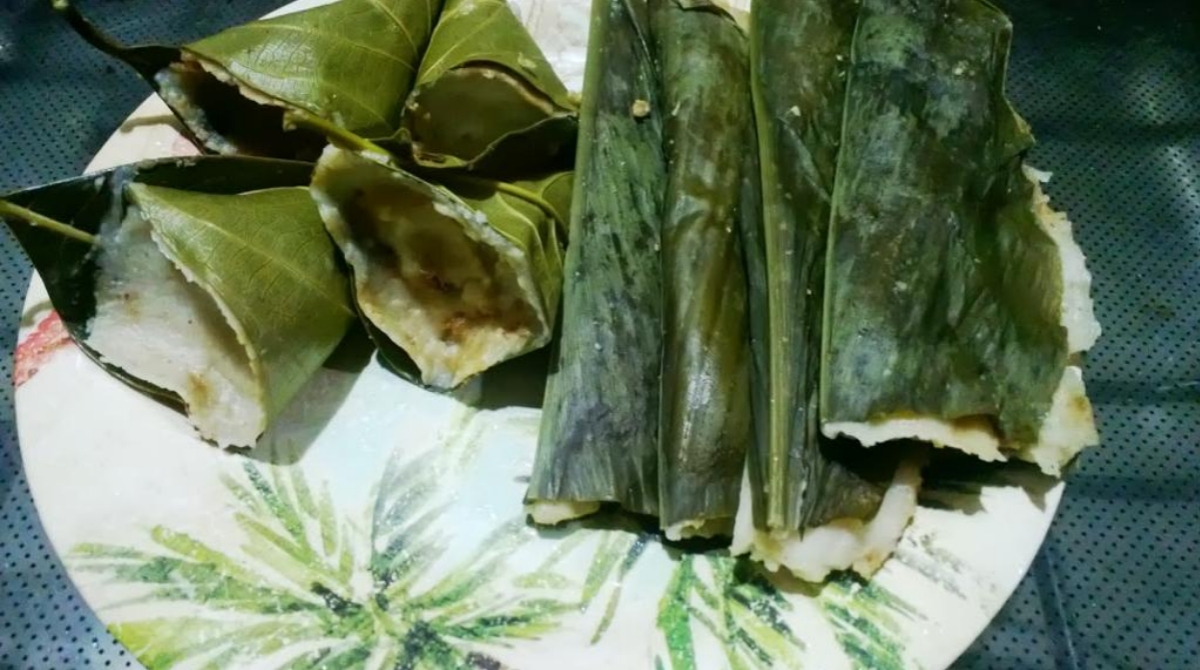We love the annual routine of making Patoleo commemorate the feast Assumption of Our Lady and India’s Independence Day!
The nearby markets are constantly teeming with bundles of turmeric leaves whilst back home the preparations are on to soak red rice, grind it great for application onto the leaves and then include the filler.
A sweet mix of both jaggery, grated coconut, boiled moong dal or sugar, boiled moong dal and grated coconut!

Patoleo are made for Konsachem Fest, or the Roman Catholic harvest festival, which begins off from the Church of Our Lady of Snows, Raia, on the 5th of August and continues through the month in various parish Churches on distinctive dates.
The harvest festival on the 21st of August through the Comunidade (community) of Taleigão of Tiswadi taluka is traditionally vast on account that the culture dates back to 1510 when Alfonso de Albuquerque and his men observed themselves stranded and deprived of meals after an onslaught through Adil Shah.
The people of Taleigão added nourishment to Alfonso and his men. After Alfonso regained Goa, he granted the villagers the privilege of being the first in the taluka to cut and bless the sheaves of new paddy.
The most surprising of all is Patoleo has its possible origin in faraway Bengal.
The patoleo is quite similar to the preparation called pitha in Bengal, which is also a rice batter and coconut-jaggery stuffed steamed dumpling made in January for the seasonal harvest of rice there.
I believe that migration [triggered by fear of foreign invasion in medieval India] brought it to Goa.
The rice, jaggery, and coconut sweet dish obviously made its way into Christian cuisine from Hindu culture.
The same patoleo, with a slight variation, are made to celebrate Nag Panchami, the worship of snakes during the Hindu month of Shravana, which begins on 23rd of July, and the harvest festival Navyachi Panchamon which is celebrated on the day after Ganesh Chaturthi (Chavath in Konkani), the auspicious day to pay obeisance to the Hindu god Ganesha.
Hartalika Teej Vrat is a fast undertaken by Hindu women in commemoration of Parvati’s penance to secure Shiva as a husband.
Hartalika is the name given to Parvati by Shiva, and she was to be worshipped under this name. After the rituals, the women celebrate by eating patoleo.
The salt-free patoleo are also offered to the goddess, who is said to have craved them when she was pregnant.
Traditionally, Hindus and Catholics have sent patoleo alongside with the vojem, or trousseau, to the groom’s house. The distribution of patoleo would mark blissful activities such as the birth of a child and the building of a new house.
The turmeric leaves used to incorporate and flavour the patoleo are fragrant, and have recuperation skills due to their antioxidant, anti-inflammatory, antifungal and antibacterial properties.
The palm or sugarcane jaggery that is used gives an herbal sweetener with nutrients. Grated coconut has lauric acid that can amplify HDL (good) cholesterol level in the blood.
Variations of patoleo are available, with banana and jackfruit leaves being substituted for turmeric leaves, and additions of dal, jackfruit pieces, raisins, cashew nuts or pumpkin.
The easiest recipe, however, calls for a paste made from parboiled rice that is soaked and ground. The paste is utilized to rectangular-cut turmeric leaves and stuffed with choon, which is a combination of coconut jaggery, grated coconut and cardamom. The leaves are folded and then steamed in a confro (vessel for steaming).
This is probably true, for the patoleo can even be found among Mumbai’s East Indian Catholic community, where it is called pan mori, and patoley by Mangalorean Catholics.
For some years now, Patoienchem Fest has been celebrated at Socorro in Bardez as well with much pomp.
The no-frills festival is meant to amalgamate various aspects of Goa’s culture to awaken a sense of pride that will motivate our younger generation to work towards preserving the same.


